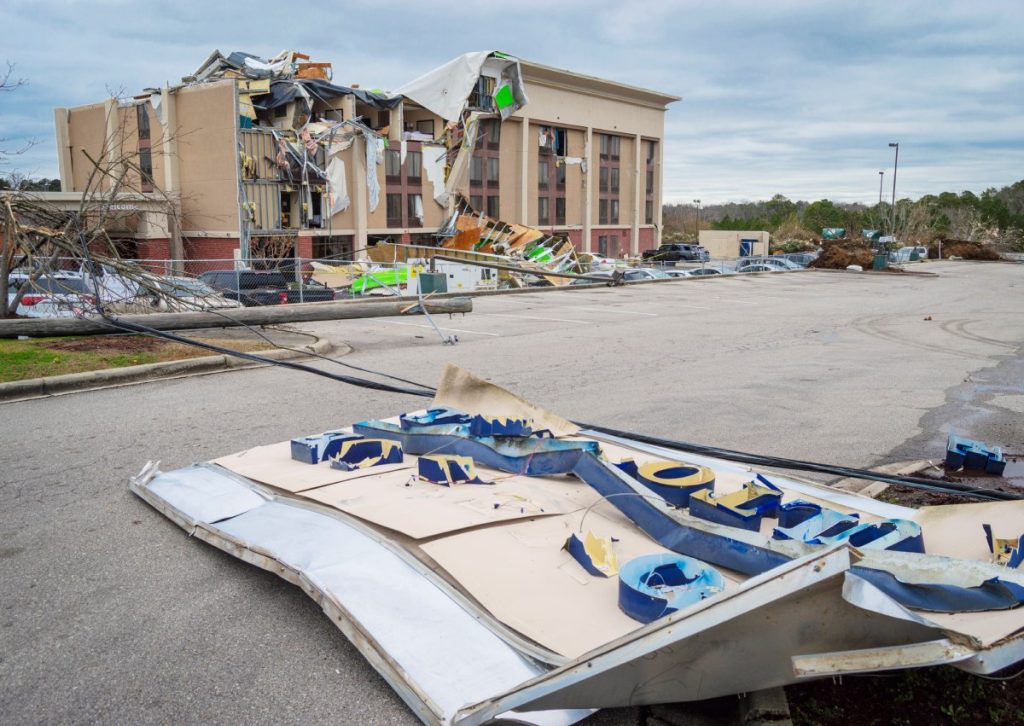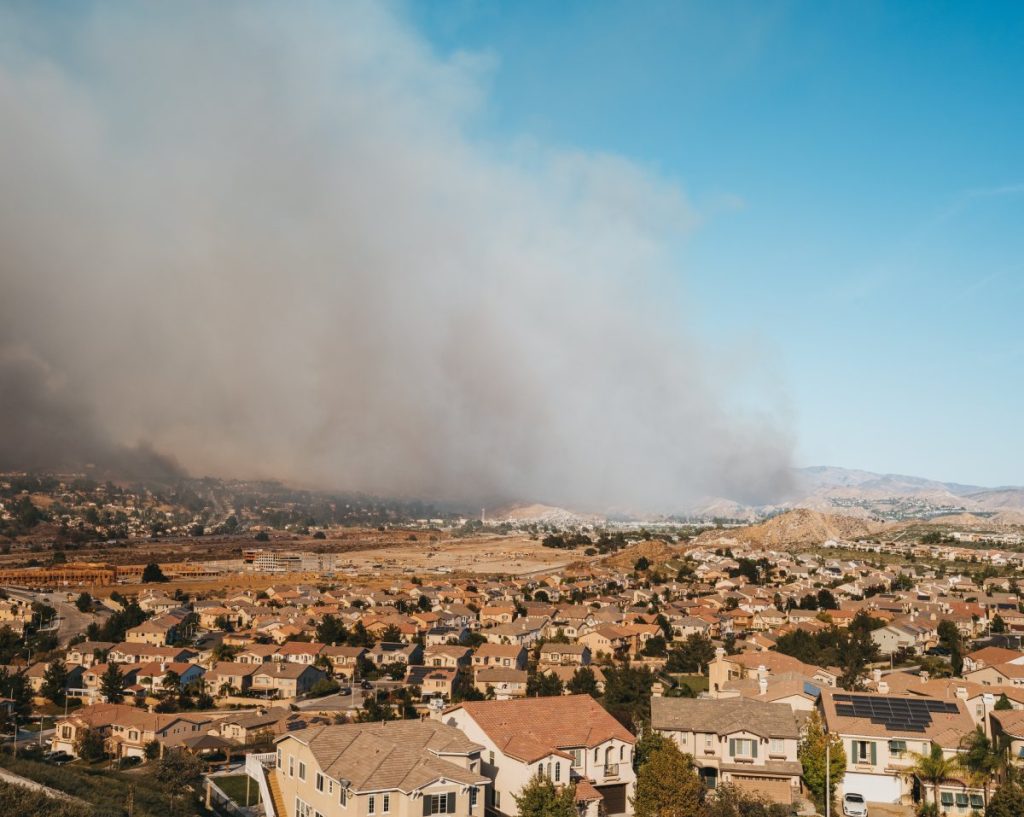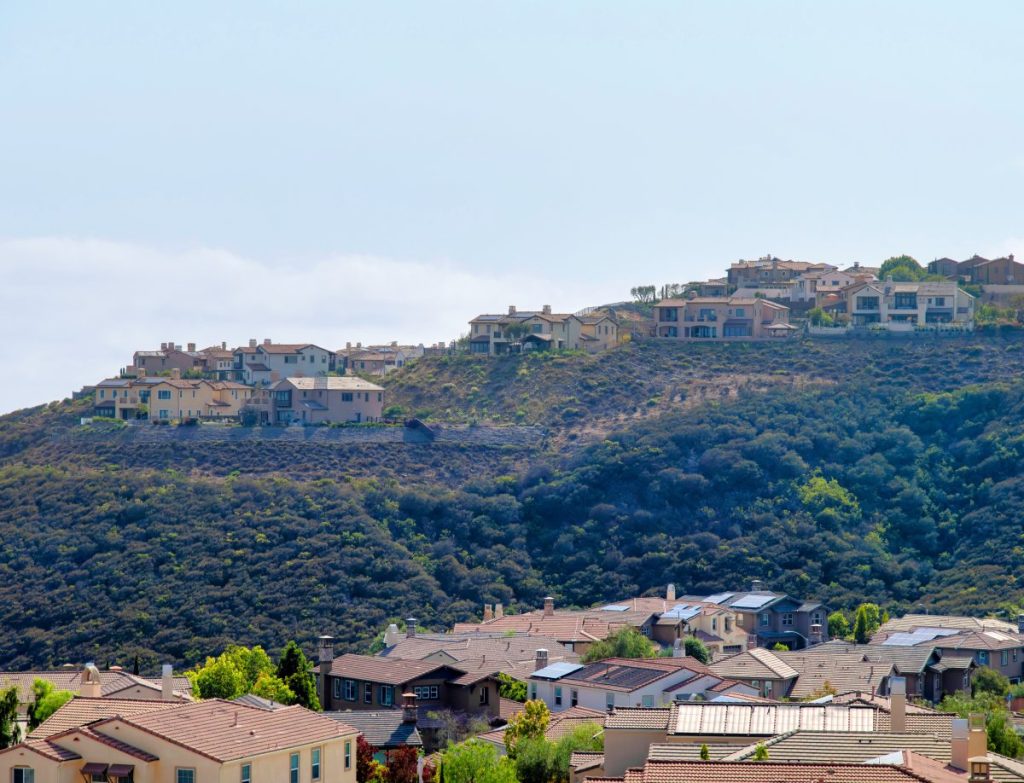California is grappling with a profound home insurance crisis exacerbated by escalating natural disasters and longstanding regulatory challenges. In recent years, the state has witnessed a surge in catastrophic events, notably wildfires, that have devastated communities and caused huge financial losses. The 2025 Los Angeles wildfires alone destroyed more than 15,400 properties and damaged another 2,000, causing over $35.7 billion in estimated structural losses.
This heightened wildfire risk has prompted major insurers to raise prices, scale back their offerings, or even leave the California insurance market altogether. State Farm, the state’s largest home insurer, sought a 22% emergency rate increase to stabilize its operations. Other insurers have either limited new policies or withdrawn from high-risk areas, leaving homeowners with fewer coverage options.
On top of this, policy non-renewals have surged, particularly in wildfire-prone regions. Between 2015 and 2024, nearly 7.6 million non-renewals were recorded statewide, with some San Francisco Bay Area neighborhoods experiencing non-renewal rates as high as one in every 10 policies.
This blog examines the ongoing crisis and provides tips and resources for homeowners trying to navigate it.
What Is the California Home Insurance Crisis?
A crisis in the home insurance sector occurs when homeowners face few or no viable coverage options because insurers have significantly reduced coverage availability, raised premiums to unsustainable levels, or exited the market entirely. In California, this crisis has been driven by increasing natural disasters, rising rebuilding costs, and longstanding regulatory constraints that limit insurers’ ability to adjust rates in response to risk.
California has faced similar challenges in the past. Homeowners faced a similar situation after the 1991 Oakland Hills Fire, which caused over $1.5 billion in damages. Likewise, after the devastating 2017-2018 wildfire seasons—including the Camp Fire, which led to $16.5 billion in insured losses—major players in the insurance industry once again began scaling back their California presence, forcing state regulators to impose temporary bans on non-renewals to protect policyholders.
Today, the situation has escalated to an unprecedented level. Faced with skyrocketing premiums or outright policy cancellations, many homeowners are left scrambling for coverage, often turning to the California FAIR Plan, which provides only bare-bones coverage at higher rates. For homeowners, this means greater financial strain, limited recovery options after a disaster, and an increased risk of being uninsured or underinsured when the next disaster strikes.
Why Is California in a Home Insurance Crisis?
Let’s consider the roots of the current crisis.
Increase in Wildfires and Natural Disasters
Climate change has significantly exacerbated the risk of wildfires and, thus, the state’s insurance crisis. Rising temperatures, prolonged droughts, and shifting wind patterns have created conditions that make wildfires more intense and unpredictable. Homeowners in high-risk zones have reported premium increases of 300% or more, making coverage unaffordable for many.
One of the hardest-hit areas in California’s insurance crisis is the wildland-urban interface (WUI)—regions where residential developments border undeveloped wildlands. These areas are particularly vulnerable to wildfires, as dry vegetation and human activity create a perfect storm for ignition and rapid fire spread.
Insurance companies have been retreating from the WUI zones because of the high risk of catastrophic loss. Non-renewals have surged in some of the worst-hit communities, including parts of Los Angeles, Napa Valley, and San Bernardino. Insurers argue that state regulations prevent them from pricing policies accurately based on current wildfire risk.
Impact on California Homeowners
This crisis is burdening California homeowners, affecting their financial stability, ability to secure coverage, and even the real estate market.
Financial Strain
The most immediate and painful consequence of the crisis for homeowners is the rise in premiums. These escalating costs are putting significant pressure on household budgets, forcing families to make tough financial trade-offs. Many homeowners are cutting back on discretionary spending, dipping into savings, or even opting for policies with less coverage to afford their premiums. The financial strain is particularly severe for retirees and middle-class homeowners, who lack the disposable income to absorb these unexpected increases.
Homeowners in High-Risk Areas
The crisis is even more acute for those living in high-risk wildfire zones, such as Los Angeles, Napa Valley, and parts of the Bay Area. Many homeowners have been forced to turn to surplus-line insurers, which provide non-regulated coverage but often come with unpredictable rate hikes and reduced consumer protections. Others have seen their policies dropped altogether: in some Los Angeles and Marin County areas, as many as 1 in 5 homes have lost their traditional insurance coverage.
In addition, when homeowners lose coverage, mortgage lenders often step in with forced-placed insurance, which provides minimal protection at even higher premiums. This has left many Californians in a no-win situation: unable to find affordable insurance but still obligated to pay excessive costs to satisfy their mortgage agreements.
Real Estate Market Implications
The homeowners insurance crisis is reshaping California’s real estate market, making it harder to buy and sell homes in the hardest-hit areas. A growing number of real estate transactions are falling through because buyers either cannot secure insurance or find that coverage costs make homeownership unaffordable.
For sellers, homes in wildfire-prone areas are sitting on the market longer, and prices are beginning to stagnate or decline. Some homeowners have reported needing to lower their asking prices by tens or even hundreds of thousands of dollars to attract buyers willing to take on the high insurance costs. In certain regions, particularly rural and hillside communities, real estate experts have noted a decline in property values as insurance availability has dwindled.
Meanwhile, prospective buyers are factoring insurance costs into their purchasing decisions more than ever before. In some cases, they’re choosing to walk away from deals or shift their focus to areas with more stable insurance markets. This shift in demand is widening the gap between desirable, insurable properties and high-risk homes that are becoming—or could become—increasingly difficult to sell.
What is California Doing to Solve This?
With the home insurance crisis threatening financial stability for thousands of homeowners, California has been taking steps to stabilize the market, ensure coverage availability, and prevent further insurer exits. While some measures have provided temporary relief, many experts argue that long-term solutions are still lacking.
Current Laws
California has several laws to protect homeowners from sudden coverage losses, unfair pricing practices, and a long rate approval process. Among the most significant are:
- Moratoriums on Non-Renewals – Following major wildfires, the state has temporarily banned insurers from dropping policies in affected areas. While this provides short-term relief, it doesn’t prevent insurers from withdrawing once the moratorium expires.
- Proposition 103 (1988) – This law requires insurance companies to justify rate increases and obtain state approval before implementing them. While designed to prevent price gouging, many insurers claim it limits their ability to adjust rates based on real risk, contributing to their withdrawal from the market.
- Hardening and Mitigation Incentives – The state has pushed insurers to reward homeowners who make fire-resistant upgrades, such as installing fireproof roofs and clearing defensible space. However, the effectiveness of these incentives remains limited, as many homeowners still face high premiums even after investing in mitigation measures.
Despite these laws, insurers continue to exit the market or drastically reduce their offerings, indicating that more substantial reforms may be necessary.
California Department of Insurance
California Insurance Commissioner Ricardo Lara has taken big steps to mitigate the crisis. Some of the CDI’s key sustainable insurance strategies include:
- Expanding FAIR Plan coverage – Commissioner Lara has pushed for the California FAIR Plan to offer broader coverage options beyond fire-only policies.
- Proposing reinsurance strategies – CDI has explored ways to use state-backed reinsurance (i.e., insurance for insurers) to encourage companies to continue writing policies in California.
- Allowing risk-based pricing reforms – In 2023, CDI announced that insurers could factor climate change risks and catastrophe modeling into their pricing to keep them in the market.
These measures have been aimed at preventing further destabilization, but they have yet to bring back major insurers or meaningfully lower homeowner premiums.
California FAIR Plan
The California FAIR Plan was established in 1968 as an insurer of last resort for homeowners who could not obtain coverage through the private market. The FAIR Plan provides basic fire insurance, but coverage is often more expensive and less comprehensive than private policies.
FAIR Plan dwelling policies have more than doubled from just under 203,000 in 2021 to nearly 452,000 policies today. The total exposure for these policies is $496 billion, almost triple what it was in 2020.
Commercial policies under the FAIR Plan have also nearly tripled. Though less common than residential policies, commercial policies went from just under 6,000 in 2021 to almost 16,000 at the end of 2024, representing another $33 billion in exposure for the state.
As the FAIR Plan takes on more high-risk properties, concerns have grown about its long-term sustainability. Some experts worry that a catastrophic wildfire season could leave the FAIR Plan unable to cover all claims, potentially requiring a taxpayer bailout.
While the FAIR Plan provides a safety net, it’s likely not a viable long-term substitute for a healthy, competitive private insurance market.
Advocacy and Consumer Groups
Consumer advocate organizations have been actively pushing for stronger reforms to protect homeowners. Groups like Consumer Watchdog and the United Policyholders have played key roles in fighting unjust rate increases, lobbying for stronger insurance regulations, and educating homeowners about their rights in the marketplace.
While these groups have successfully blocked some extreme price hikes and pushed for stronger consumer protections, the broader crisis remains unresolved, leaving many Californians uncertain.
Tips for California Homeowners Facing Insurance Claims Challenges
Here are some tips if you find yourself facing challenges with insurance claims.
Making Your Way through the Market
Finding an affordable and comprehensive homeowners insurance policy in California’s unstable market requires persistence and strategy. Here are key tips for securing coverage:
- Shop Around Aggressively – While major insurers are pulling out, some regional and smaller insurers are still writing policies. Comparing quotes from multiple providers—including surplus-line carriers—can help homeowners find the best rates.
- Consider Independent Insurance Brokers – Independent insurance agents often have access to insurers and policies that aren’t widely advertised. They can help you navigate non-standard options, including bundled policies.
- Look Into the California FAIR Plan – If all private insurance options are exhausted, the FAIR Plan can provide coverage. However, homeowners should be aware that it typically offers fire-only policies, requiring additional coverage for liability, theft, and other risks, and you have to demonstrate that your attempts to seek coverage elsewhere were unsuccessful.
- Check With Mortgage Lenders – Lenders often require insurance, but some may partner with insurers willing to cover high-risk properties. Be proactive in discussing options.
- Look into Discounts and Mitigation Credits – Some insurers offer reductions for fire-resistant upgrades, membership in wildfire safety programs, or bundling with auto insurance.
Risk Mitigation Strategies
If you’re looking into risk mitigation, here are some steps you can take.
- Defensible Space – Clearing vegetation and maintaining at least 100 feet of defensible space around the home significantly reduces the risk of fire.
- Fire-Resistant Building Materials – Installing fire-resistant roofing, ember-resistant vents, and non-combustible siding can lower premiums.
- Hardening the Home – Upgrading windows, decks, and gutters to fire-safe alternatives can make a property more insurable.
- Community-Based Fire Prevention Programs – Some areas offer insurance discounts for participating in programs promoting community-wide wildfire preparedness.
- Backup Power Solutions – Having a generator or battery backup can help maintain safety during power outages and may qualify for discounts with some insurers.
Available Resources
For homeowners struggling to secure or afford coverage, various state programs, consumer groups, and legal resources are available:
- California Department of Insurance (CDI) – The Department of Insurance provides information on insurer withdrawals, FAIR Plan options, and consumer rights. Homeowners can file complaints against insurers if they experience unfair treatment.
- United Policyholders – This nonprofit organization offers guides, webinars, and advocacy for insurance policyholders navigating claims and coverage issues.
- Consumer Watchdog – This advocacy group fights against unjust insurance rate hikes and unfair policy cancellations in California.
- California FAIR Plan – This is the state’s insurer of last resort, offering coverage for homeowners who have been denied by private insurers.
- Legal Assistance for Denied Claims – Homeowners facing denied or underpaid homeowners insurance claims may need legal representation. A property insurance law firm like Merlin Law Group can help challenge unfair denials, delays, and bad faith practices.
The Future of Home Insurance in California
The home insurance crisis in California is at a pivotal moment. Experts predict that insurance premiums will continue rising in California, particularly in high-risk wildfire zones, unless major regulatory and market changes occur.
Insurers are increasingly turning to catastrophe modeling and AI-driven risk assessments, which could lead to more precise but higher-priced, risk-based premiums. Meanwhile, some predict that state-backed reinsurance programs or risk-sharing agreements with private insurers could be introduced to keep coverage available.
In the short term, the burden will likely continue falling on homeowners, with more residents turning to the California FAIR Plan, surplus-line insurers, or risk mitigation strategies to remain insured.
While no single solution will fix the crisis overnight, a balanced approach that combines risk-sharing, incentives, and improved underwriting practices is likely to define California’s long-term strategy.
Comparative Analysis: How Does California’s Crisis Compare to Other States?
California’s homeowners insurance crisis isn’t unique—other states facing high disaster risks are experiencing similar challenges.
For instance, Florida’s hurricane exposure has led insurers to leave the state, raise rates, or require costly home upgrades. Florida homeowners now pay some of the highest insurance premiums in the country—up to $6,000 to $10,000 per year—and the state has had to create a state-run insurer, Citizens Property Insurance, to fill coverage gaps—similar to California’s FAIR Plan.
Why Merlin?
The California home insurance crisis is unlikely to resolve overnight, but proactive solutions, regulatory flexibility, and technological advancements could help stabilize the market.
With 40 years of dedicated service, Merlin Law Group’s experienced attorneys specialize in advocating for policyholders. We’ve recovered over $2 billion in damages for our clients.
If you need assistance with any part of the insurance claims process, call us. As The Policyholder’s Advocate™, we have your back. Contact Merlin Law Group today for expert assistance.



